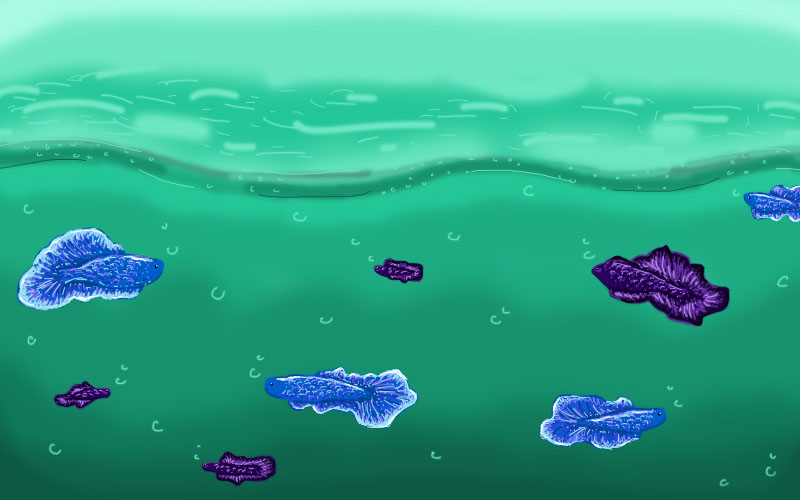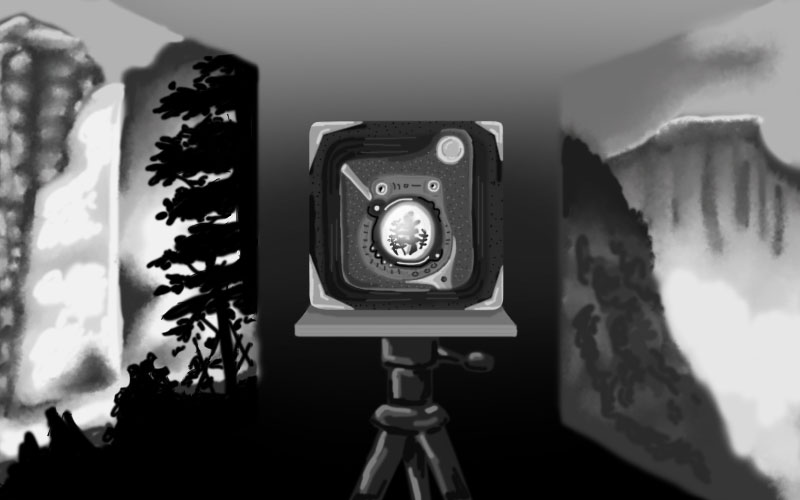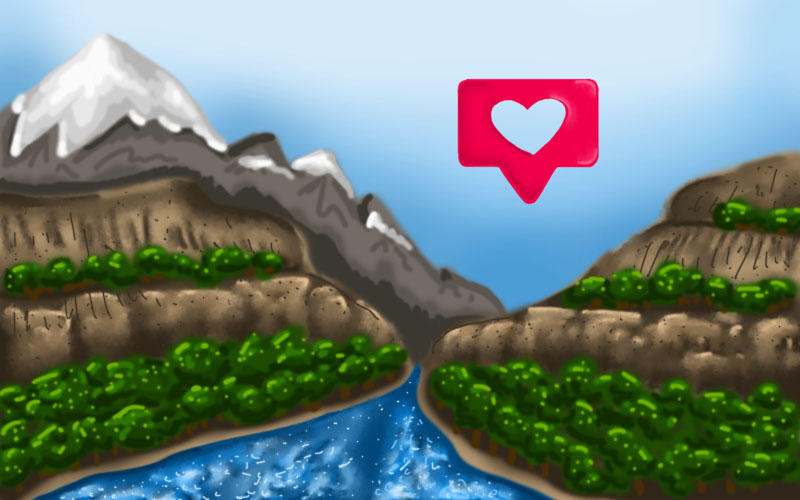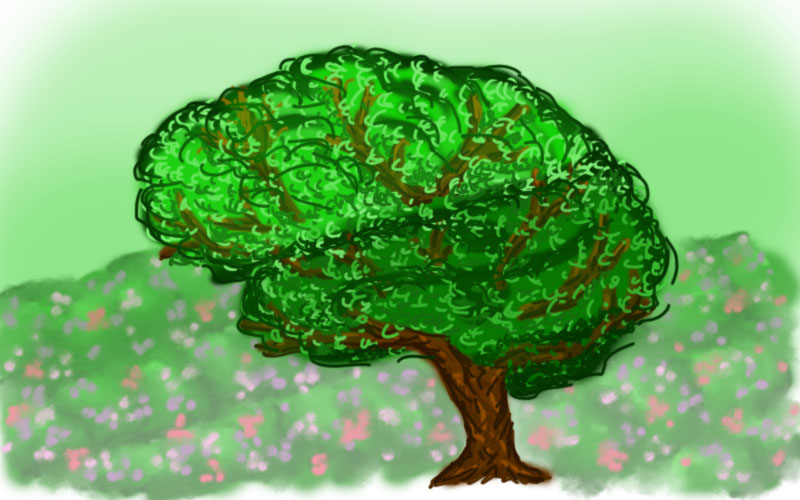If I had a dime for every picture I’ve seen of a tourist with a toothy grin standing on the shores of Lake Louise I’d be a millionaire. Lake Louise, an opaque turquoise pool nestled between Fairview Mountain and the Beehive Hems in Banff National Park, is often referred to as the most photographed location in Canada. #LakeLouise currently boasts 840K pictures on Instagram. The number grows daily.
I understand the fascination. For a long time, Lake Louise was my nature porn. I lusted after her like a 13-year-old straight boy stumbling upon a Jenna Jameson film for the first time. The steep tree-studded glaciers lining the pool’s emerald lips haunted my dreams. I imagined myself gliding along her glassy-green top in one of the red canoes I’d seen in photographs, my oar dipping inside her like a hand in a silk glove. I wanted her to myself, just as she appeared in the pictures I coveted: a traveler on a half-submerged stone staring wistfully into the distance; a pair of feet stretching toward the top of a canoe with the Rocky Mountains erupting in the background; a hiker with a shit-eating smile drunk on the lake’s unbelievable beauty. How could I get her alone to take my own picture and enter the Insta-pantheon of people lucky enough to see Lake Louise in the flesh?
If you’ve ever been to this glacial lake’s shores, you know no one here is ever alone. In the peak summer season, upwards of 15,000 people visit in a single day.
This is a very different scenario from 150 years ago when white settlers first learned about Lake Louise. The Nakoda tribe, native to the Canadian Rockies long before Europeans arrived, originally named this lake Ho-run-num-nay, meaning “lake of little fishes.” Edwin Hunter, a Nakoda guide with a remarkably Anglo name considering his Native American ancestry, brought Tom Wilson, a white man seeking a route for the Canadian Pacific Railway through the Rockies, to Ho-run-num-nay in 1882. Wilson, the first white man to see it, renamed it Emerald Lake. It was renamed again in 1884 in honor of Queen Victoria’s daughter, Louise, who was married to the General Governor of Canada.

Humans have long laid claim to places by renaming them in their image. Cities like Victoria (British Columbia’s capital), landscapes (see above), and even people (the Nakoda were renamed the Stony tribe by white settlers) are all subjected to this ego-driven power play. In today’s technological age, where everything is already named and geo-tagged, we instead take endless photos of places we “discover” and share them on social media to call them our own. The selfies we snap in front of famous sites become our trophies, destined to collect virtual dust in our phones until they die, as all machines do.
But what if an image could be eternal? This curiosity caught Tom Wilson’s attention when, before his visit, Edwin Hunter cryptically described the magic of Ho-run-num-nay:
“It is the picture of the Great Spirit made for Indians of blue that never fades. When He paints for the white man, pictures all fade, but the Indians’ picture lasts forever.”
When I made plans to visit Lake Louise last September, I was giddy thinking about taking my glamour shot in front of her emerald waters. When I arrived, all I could think of was Edwin Hunter.
“ . . . for the white man, pictures all fade.”
I was surrounded by a sea of selfie sticks attached to travelers trying to catch the perfect picture like a Pokémon character (gotta catch ‘em all!). The masterpiece was painted right in front of them, but rather than enjoy the view organically, they carelessly tried replicating the infinite landscape through a 4.6-inch phone screen. Even if their replication was successful, their photo was destined to disappear in a machine that would become obsolete within a few years. I started to question my own desire to take a selfie. What was the point?
For some, like professional photographers, the point is clear. The perspective of trained artists can help laypeople see the world in a new way. Yosemite’s famous Tunnel View may never have gained notoriety without the masterful craftsmanship of Ansel Adams’s gelatin silver prints. He found the perfect angle, used the right exposure, and turned photography into storytelling.

A case can also be made for those using high-quality cameras. Today, some photographic equipment is more adept at processing light than the average human eye. With the right photographer working the lens, the pictures these machines produce offer opportunities to see our surroundings with greater clarity than ever before.
I can’t knock documentation for sensible social sharing, either. I do it all the time. I love having a digital bank of vacation memories and a way to connect with friends about the places we visit. Sometimes, after posting about a destination on Instagram, friends who are local experts send me suggestions for must-see sites I might’ve missed otherwise. I love offering the same advice. Selfies in far-off cities that have sparked connections with long-lost buddies and started conversations with new ones. If I’m feeling down, looking at a photo from a favorite trip reminds me to be grateful for the bountiful life I live.
On the contrary, I’m bewildered by mindless Instagrammers who tap their phone’s picture button relentlessly without the slightest thought of focusing or frame. I’m saddened by people posing for pictures more concerned with their appearance than their surroundings. These amateur photographers and models are chained to their cameras like dogs to a pole, unable to chase the genuine impulse of exploration. To see someone digest the scene before them without the filter of their phone is a rarity in 2019.
In a study published in the Journal of Applied Research in Memory and Cognition, researchers found that people are less likely to remember things they photograph than things they only observe. Edwin Hunter’s century-old proverb was correct — even if our social media channels are filled with a gazillion site-specific selfies, our memory of these places will fade. Coincidentally, the age group predicted to spend the most money on travel this year, Millennials, also happens to be the most active on Instagram. It seems our modern Magellans may unintentionally be giving themselves a very expensive case of travel dementia.

So why are we letting our phones steal our travel experiences?
We’re addicted. It’s a fact of modern life: we’ve got a cellular problem, and it’s affecting us on a molecular level. The average American views their screen 52 times a day. They touch, tap, type, swipe, or click around 2,600 times. Last year, 86% of Americans admitted to checking their email and social media accounts constantly. A whopping 89% of college students said they feel phantom phone vibrations even when their phones aren’t on them.
I use the collective “we” here because despite the distaste I’ve described, I’m not immune to these averages. According to Apple Screen Time on my iPhone’s Settings app, I spend approximately three hours a day on my phone, close to the national average. I disconnect from my surroundings four or five times every hour to check my screen. Last week, while in my hometown, I took 72 pictures. They’re all crap and I most likely won’t use any of them. When I’m busy trying to get the perfect travel picture, this number is probably higher. If I’m honest, I’m usually too screen-obsessed to notice the time I waste filtering my experiences.
This constant connection to a device is doing our brains a disservice. Every time our smartphone diverts us from reality we pay a switch cost: an interruption in our brain’s thought processes. While this only accounts for a few tenths of a second each time it happens, the cumulative cost of our bifurcated focus can amount to 40% of our brain’s daily productivity.
On top of that, phone usage spikes levels of the stress hormone cortisol in our brain. Increased amounts of cortisol can impair the prefrontal cortex, the part of our brain in control of rational thought, leading to poor decision-making. Knowing this, is it no wonder that since 2011 there have been over 250 selfie-related deaths worldwide? When the digital screens we cling to impair our better judgment, standing next to the sole tree on the side of a cliff in a lightning storm starts to sound sensible. The photo will be positively electric. We’ll break social media. 65.6K people #diditforthegram, so why shouldn’t we?
Okay — maybe a careless photo-op won’t end our lives, but increased cortisol levels may threaten to shorten our lifespans. Catherine Price, author of How to Break Up With Your Phone, notes that “chronically elevated cortisol levels have been tied to an increased risk of serious health problems, including depression, obesity, metabolic syndrome, Type 2 diabetes, fertility issues, high blood pressure, heart attack, dementia and stroke.” It reads like a bad infomercial for a prescription medicine you shouldn’t take. Unlike the adage “what doesn’t kill you makes you stronger,” if taking selfies doesn’t kill you immediately, just wait for the Black Mirror plot twist. The smartphone will still get us in the end.
Fortunately, the selfie addicts at Lake Louise intuitively know how to solve this problem: get outside. Japanese researchers, led by Yoshifumi Miyazaki, found in a study that a 15-minute walk in nature decreased levels of cortisol in participants by 16%. Physician Oliver Sacks, in an essay posthumously published by The New York Times, wrote “I cannot say exactly how nature exerts its calming and organizing effects on our brains, but I have seen in my patients the restorative and healing powers of nature and gardens, even for those who are deeply disabled neurologically. In many cases, gardens and nature are more powerful than any medication.”

Unfortunately, modern selfie addicts don’t realize that adding their phone into this equation is combating the natural health benefits. Your cortisol levels may decrease when traveling in Banff National Park, but they’ll still increase every time you pick up your phone to take a picture. It’s the great paradox of our globally connected world — 5G makes the act of traveling easier but diverts our attention once we finally arrive. We travel to experience new places but are habitually drawn back into our phones instead. The struggle is real.
Every day around noon, I take my dog, a seven-year-old Catahoula named Mona Pickles, for a walk through the North Woods of New York’s Central Park. This part of the park, with an ambling river, miniature waterfall, and shock of thick green forest, is as wild as Manhattan gets. It’s no Lake Louise, but it’ll do. When we enter the park, my screen’s text cursor is still blinking behind my eyes with the day’s unfinished duties. But as it’s my midday break in a park I know well, I rarely bring my phone. What reason do I have to take pictures in my backyard? On a typical day, as soon as we enter the woods, Mona’s ears perk up and her tail swooshes into the air. Almost immediately, she spots a chipmunk I can barely see. Her sleuth-like hunting skills call attention to squirrels and sparrows invisible to my eyes until, ten minutes later, I tune in and forget my phantom limb recharging in my apartment. Then, I join her in a delicate dance. Mona’s toenail’s tickle the pavement, the rubber soles of my shoes scrape along behind her, and we pause every few steps for a rustle in the underbrush. Once in a while, there’s a rustle from above, and we both turn sky-high to see a falcon swooping talon-first through dark brown oak branches toward unsuspecting prey. Mona yelps excitedly for the aerial act. I stand in awe, grateful to have noticed.
I was recently telling a friend about my Central Park falcon sightings. “Pic or it didn’t happen,” he said incredulously, having never seen a bird of prey in such proximity. I scrolled through my camera roll to see if I had any pictures. I didn’t. I did, however, have an entire album filled with photos of lakes from my recent trip to Banff National Park, so I pulled up an image that looked particularly pleasing.
“Where’s that?” he asked.
I struggled to find an answer, my memory of pressing the photo button already fading from view. All that was left was my slightly askew iPhone image and a geotag. Lake Minnewanka. “Funny,” I said, “I don’t remember going there.” •




